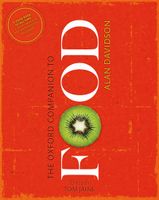Advertisement
Hominy
Published 2014
It was one of the first foods European settlers readily accepted from the Native Americans, and the word, from one or another Algonquian words, such as rockahominie (‘parched corn’) or tackbummin (‘hulled corn’), was used as early as 1629. Different terms describe hominy that has been treated or ground in different ways. ‘Great hominy,’ also called ‘whole hominy,’ ‘pearl hominy’ (from its pearly appearance), and ‘samp’ (from the Narraganset nasàump, ‘corn mush’), is coarsely ground and prepared by scalding shelled corn in water and wood ash to separate the hulls, called the ‘eyes’.


